I haven’t been reading Dark Crisis on Infinite Earths as event fatigue has been strong for a long time. A very long time. Still, I’ve been keeping up with some of the news spinning out of the event. Reading that Pariah was brining back the original Multiverse did get my attention. I’ve taken a wait and see approach, however. This week’s Dark Crisis: Big Bang #1 got me thinking when I saw the title. Is this the beginning? Is this the issue that gets things going in some fashion? Is this where we learn the “new” history of the DC Universe? With the impending “Dawn of DC” initiative for the new year, it seems a bit distant and disjointed as we are still amidst Dark Crisis. Still, I took a chance on it.

It’s a decent issue. Barry Allen and Wallace West have a showdown with the Anti-Monitor. Old Anti-M (don’t let the take Toto away! -R.A. Jones, Amazing Heroes #91) is on the loose and Barry realizes he has to do some recon to figure out the Anti-Monitor’s next move. He and Wallace end up taking him on with some back up from a team of heroes from different worlds that Wallace is able to assemble on the fly- you get to fill in the blanks as to how this happens. The heroes win, sending Anti-M back to the antimatter Universe.
It’s not an Earth shattering tale by any means, and yet there are a lot of fun moments. Barry remembers the first Crisis on Infinite Earths and his apparent death from issue #8. I suppose what’s not clear is what else he remembers; his first meeting with Jay Garrick from The Flash #123, when Jay lived on a separate Earth? Or, has his memory been rewritten with an updated version of their first meeting that took place on a single Earth. This story has been told and supposedly post-Crisis canon, but what does Barry actually remember?
In the fallout of the original Crisis on Infinite Earths, the Psycho-Pirate was the only character in continuity to remember the Multiverse. It would be interesting if Barry were able to “remember” both versions after the events of Dark Crisis.

Throughout the issue, Barry travels through numerous worlds in what he tells Wallace is an infinite Multiverse returned. If this is the original Multiverse that Pariah has brought back, then there are a lot of expectations with that return. Barry sees some familiar parallel worlds that we’ve seen before, some new, some old and many from Grant Morrison’s The Multiversity.
This trip through the new infinite Multiverse is a lot of fun. At the end of the issue, we get notes from Barry seeing his results of cataloguing the parallel Earth’s he’s encountered. This looks to be a codifying of the Multiverse- something that DC has been needing for a while. We’ve seen it before, but it hasn’t stuck for long, or been used to its full effect.
The Multiversity itself was an exploration of worlds in the then current Multiverse. At the end of the weekly series, 52 we got a quick overview of a number of Earths. Codifying the Multiverse allows for places for stories to exist and a system in which “everything counts” can be utilized in a systematic and exciting way. “Everything counts” is a phrase we’ve heard, but what does it actually mean? Codifying and mapping the known Multiverse could give it some substance instead of confusion. What we want to know is “how does ‘everything count?” Is the answer Hypertime? The Omniverse? The Metaverse? How will it be addressed after Dark Crisis?
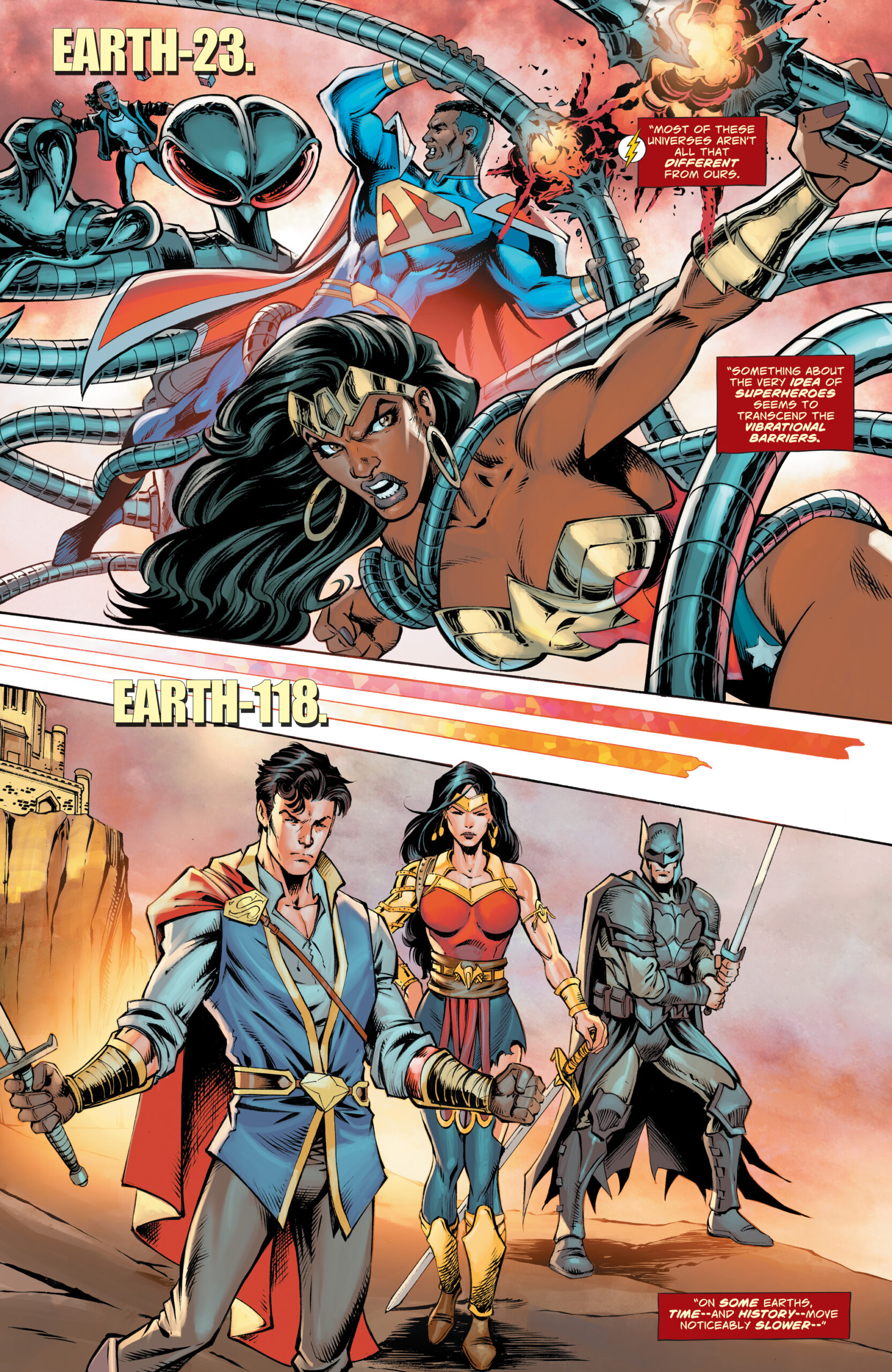
Multiverse, Metaverse, Omniverse and Hypertime
The Multiverse is a pretty easy concept to grasp. There are parallel universes that exist in the same space and time but in a different dimension. Readers tend to encounter this from the perspective of being Earth-bound, thus the Multiverse is seen thorough the lens of those living on the Earth visiting parallel Earths. The Omniverse posits that there are multiple Multiverses within all existence, so it’s possible to travel from Multiverse to Multiverse and then within each Multiverse between the parallel Earths. Before we get to the Metaverse, it’s probably best to look at Hypertime first.
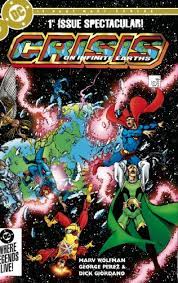
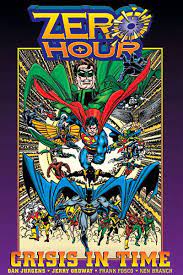
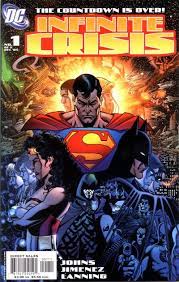
All these concepts are designed to give context and explanation to the myriad continuities that can be found in DC Comics. It all began with The Flash #123 as mentioned above. (Technically, there is another parallel Earth in DC Comics, but it existed only as a separate thing for many years was just a one-off story, it wasn’t until The Flash #123 that DC developed the idea into something. See Wonder Woman #59 for more.)
Despite the infinite parallel Earths and its subsequent destruction in Crisis on Infinite Earths, there were still continuity glitches and anomalies. With the Zero Hour event, readers were introduced to Hypertime. Hypertime was a phenomena that attempted to explain those glitches and anomalies with the idea that sometimes time lines branch off and a characters can veer back to the main timeline. This is a system that gives leeway to writers to rewrite, ignore or retcon events that are no longer desirable or just don’t seem to fit. It’s easy to see how this is useful, but also slightly unsatisfying. It leaves the reader with the sense that stories don’t matter, they can be overwritten by Hypertime.
The concept disappeared for a while and the Multiverse returned more than once. And, that’s where we stand again with Dark Crisis on Infinite Earths. However, there’s a little event, Doomsday Clock, that took place a couple of years ago that introduced the Metaverse.
Doomsday Clock, had it come out monthly, would likely have been the blueprint for how DC Comics moved forward. However, that’s not what happened. The delays (for whatever reason) stopped all momentum in the series and other ideas were introduced and discussed around it. Metal and Death Metal led to the abandoned “5G,” though undoubtedly some of that turned up in “Future State” and Infinite Frontier. Yet, since “everything matters,” Doomsday Clock still happened. What readers learned in Doomsday Clock was that there is a sliding timeline of sorts and moves around important events, such as the rocket ship carrying baby Kal-El’s arrival on Earth, and these events are affected by a force outside the Omniverse, no not Dr. Manhattan, the writers working for DC Comics!
The Metaverse acknowledges the relationship between the events inside the stories and the world in which they are being created as fiction despite that world, being a world inside the Omniverse itself. Originally, this was Earth-Prime in the original DC Multiverse, now it’s Earth-33 in the newly recovered Multiverse, check Barry’s notes, it’s there, I promise!
It should be no surprise that Geoff Johns, writer of Infinite Crisis and Doomsday Clock seems to be picking up these ideas- the Omniverse, the Metaverse and “everything counts” in his new series for DC Comics, Stargirl: The Lost Children and Justice Society of America.
The New Golden Age, Stargirl: The Lost Children and Justice Society of America
While Johns doesn’t utilize the idea of the Multiverse in The New Golden Age, Stargirl: The Lost Children and Justice Society of America, he’s using a lot of characters and concepts that originally existed on the original Earth-Two, the Earth of Jay Garrick introduced in The Flash #123 (that issue, AGAIN? Must be an important issue!).
Throughout the 1960’s, 1970’s and 1980’s up to the publication of Crisis on Infinite Earths (you KNEW that was important) in 1985, DC Comics developed the concept of the Earth-Two through crossovers in multiple titles, as well as ongoing series set on Earth-Two, All-Star Comics (revival), Adventure Comics, All-Star Squadron, Infinity, Inc. and the Huntress back-ups that ran in Wonder Woman for years. There was even a period in the seventies during the run of of the Lynda Carter led Wonder Woman television series that the Wonder Woman title took place on Earth-Two to mirror the World War II era from the first season of the T.V. show.
According to the concepts we are exploring, all those stories happened and they “count.” Some are easy to fit into continuity. The Justice Society of America formed in 1940 and were the first age of heroes, although missing some characters from their roster, Superman and Batman most notably.
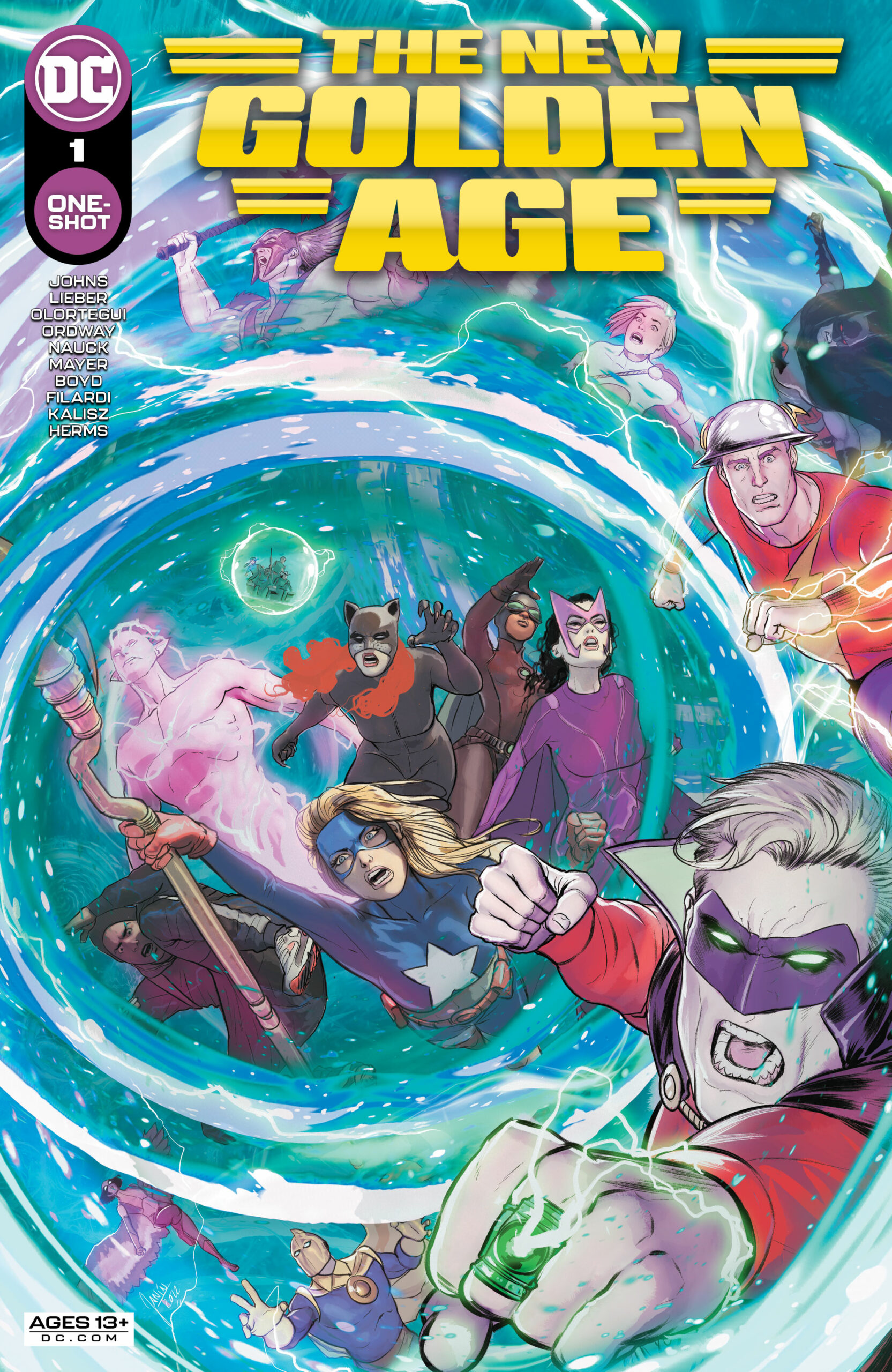
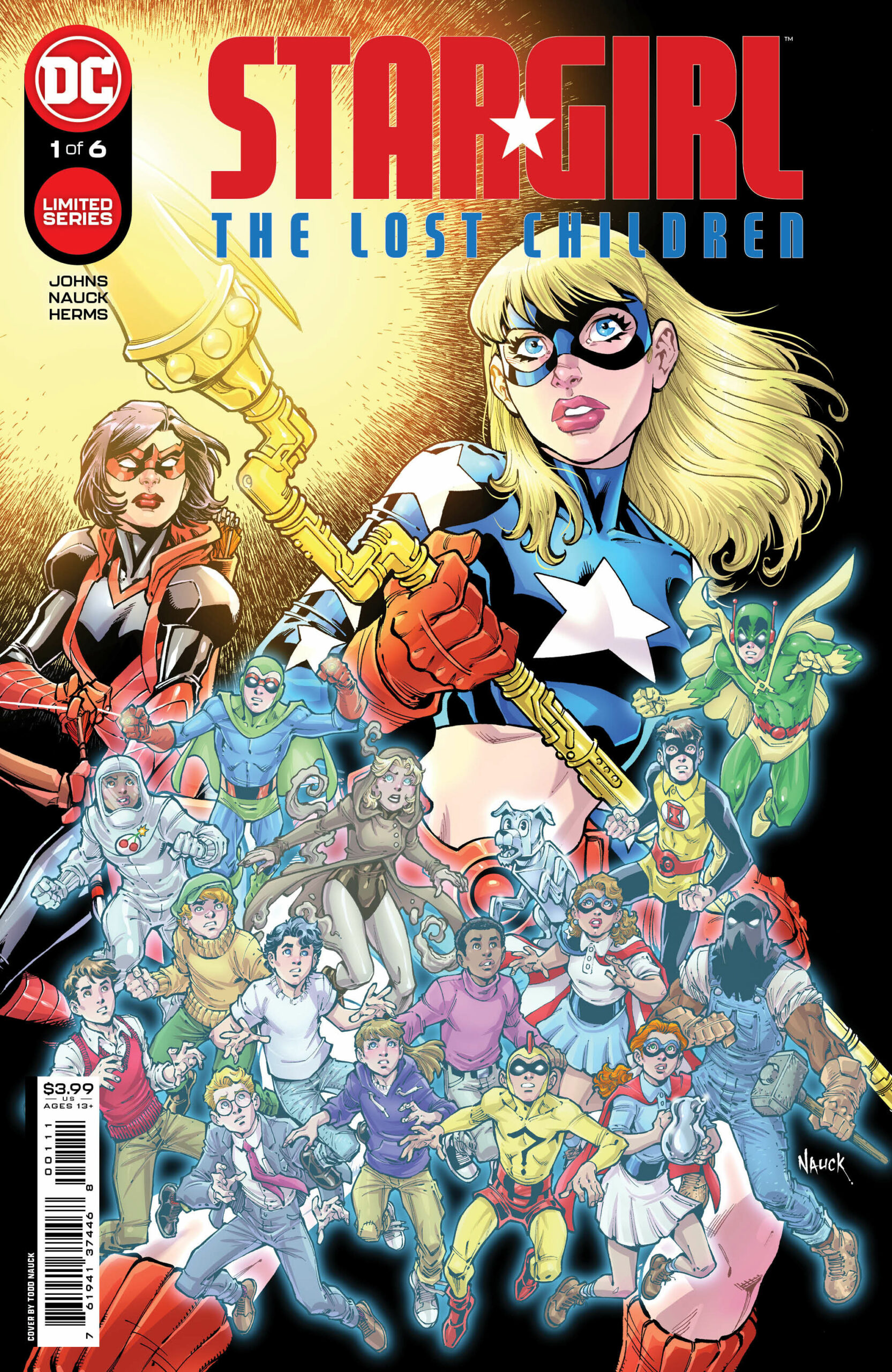
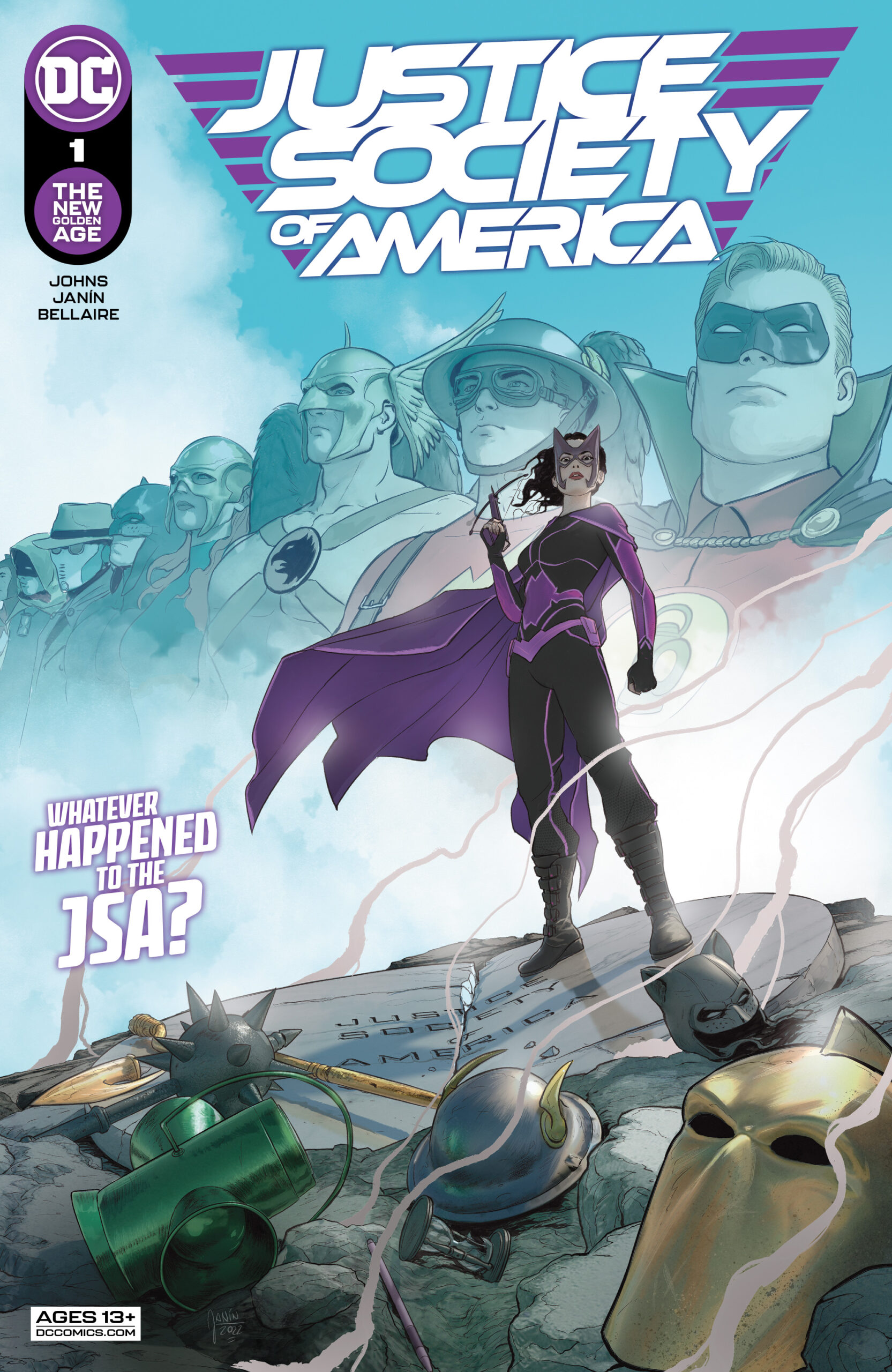
Other stories are not so easy to fit in such as the arrival of Power Girl and the Huntress. Johns is addressing the Huntress directly, beginning with The New Golden Age and continuing in Justice Society of America. He’s also using the idea of the Metaverse to do it. Remember that sliding time thing? Well, no longer is Helena Wayne born in the ’50’s to the Golden Age Batman and Catwoman, now she’s a babe in arms about 10 years from now offspring of the Earth-0, main continuity Bat and Cat.
Don’t confuse her with the Helena Wayne (or Bruce and Selina for that matter) from Tom King’s recent Batman/ Catwoman series, however. Johns has slid that timeline from Earth-Two in the ’70’s forward of our time so we get the same death of Batman and similar birth of the Huntress. It’s meta. Those stories more or less happened, just not exactly or even exactly when they were published, but there’s a lot of Earth-Two history that Johns is using.
Dark Crisis: Big Bang is the Metaverse in action, just like Superman’s first appearance in the late thirties sliding ahead to different dates to keep the Man of Steel out of the retirement home, Helena Wayne’s history has likewise shifted forward. So, if this isn’t the original Earth-Two Helena (or is it?) and it’s not the Helena Wayne from The New 52 Earth 2, doesn’t it mean the original Earth-Two is out there somewhere in the Omniverse of Multiverses?
The Multiverse Is Simple and Elegant
What Johns is doing with Helena Wayne is nothing short of wonderful. He’s found a way to work within the parameters of the way the DC Universe functions. As a long time fan of the original Earth-Two, especially Helena Wayne and Power Girl, I applaud the efforts whole heartedly. Johns is bringing up questions as well as providing exciting solutions.
One of the most surprising aspects is seeing actual dates of events. While the JSA has always been a product of the 1940’s, seeing the ’70’s issues of All-Star Comics referenced brings up the question of how time is working. We see the young Kara Zor-L as Power Girl alongside Star-Spangled Kid just as they appeared in 1976 in familiar scenes from the comics. We also see Power Girl in other points in time and questions of what exactly happened? While Helena Wayne’s timeline has slid forward, it doesn’t seem to be the case with Power Girl. Understandably, the Earth-Two Robin is missing from these scenes in the ’70’s, but we do see him with graying sideburns as he appeared in the ’70’s at Batman’s funeral that now takes place in the future of the DC Universe. So, if this is the Metaverse in action, is it really the solution to wrangling continuity? As much as I’m enjoying what Johns is doing, I don’t believe it’s the answer in the long run.
Like Hypertime and any sort of retroactive continuity, there’s an impermanence about it. What was so satisfying about the original concept of the Multiverse was that each Universe had a series of events that were permanent that defined that Universe. Could changes take place? Sure. However, massive continuity shifts were not going to happen. Earth-Two seems to be unique in the original Multiverse as it was the only continuity that attempted to keep time passing as it did in the real world. That is a unique idea in comics.
Dark Crisis: Big Bang
One of my hopes with Dark Crisis: Big Bang promising to bring back the original Multiverse was to see how the original Earth-Two had progressed since 1985. We got a glimpse of such a place in Justice Society of America Annual #1 (Volume 3). Alas, it was a one-off, but that is how Earth-Two should operate, it shouldn’t simply be versions of DC characters of based on the Golden Age versions like The New 52 Earth 2. It should BE those characters as they were developed over the decades. It’s the standard for legacy which is such a large part of the DC Comics Universe, it’s how the heroic mantle is passed from generation to generation.
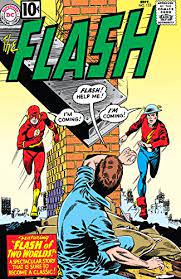
Instead of constantly having to rewrite history every time DC wants to reset, simply assigning the previous continuity to a new world in the Multiverse would keep things in order. There would be no question how a story took place. Each time there was a reset, a new world would be open to exploration with previous continuities existing on a parallel world that could still be visited. Perhaps, like Earth-Two, some of them would be popular enough to support their own series. Instead of trying to explain a sliding timeline or Hypertime that allows branches off the main timeline, the Multiversal solution is simple and elegant. It will take organization and editorial coordination to make it work.
The end of Dark Crisis: Big Bang #1 gives us a new list of Earths. It’s not hard to see how each world is unique. Will it only be these alternate Earths that keep their continuities? The real question is what will DC do to keep the main Earth, Earth-0 streamlined? How will they prevent perpetual retcons and conflicting history? Will it be the Metaverse and Hypertime which gives creators the ability to change what they don’t like or what doesn’t fit their own vision? Or, will the simplicity of the Multiverse as suggested in Dark Crisis: Big Bang come to the forefront?
This is DC’s opportunity to codify and coordinate the Multiverse, streamlining it and restoring it to the height of its popularity. What we see in Dark Crisis: Big Bang #1 could be the first step.